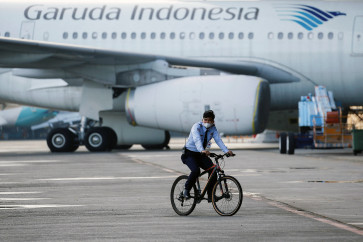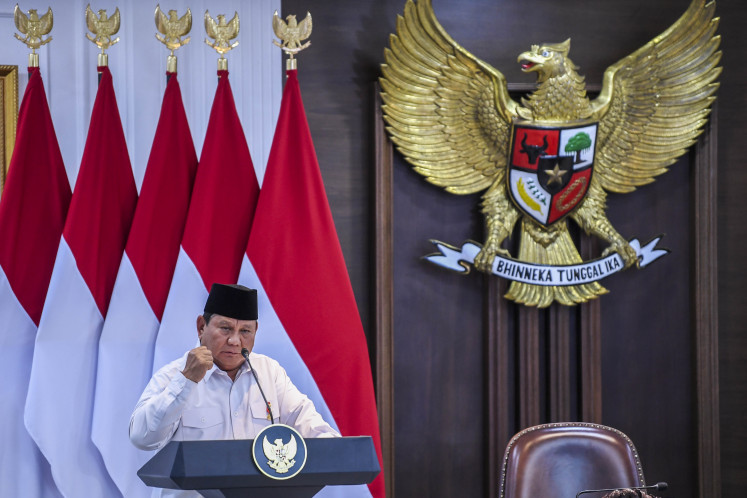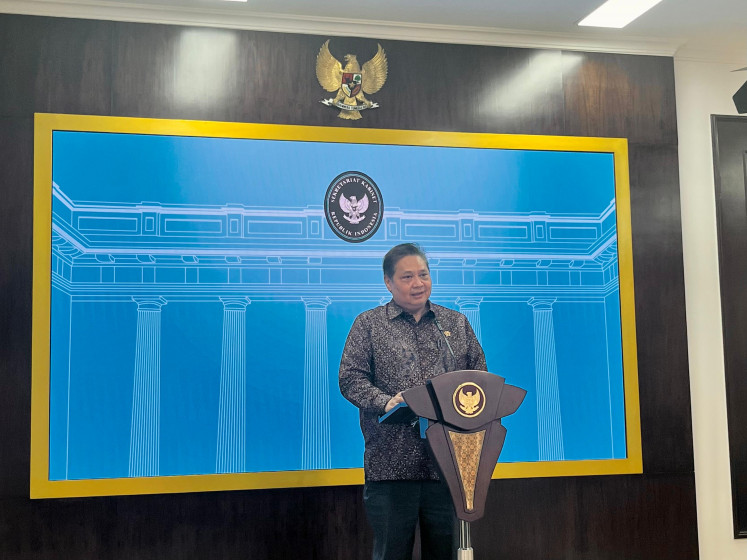E-envy: Online commerce platforms vie for consumer loyalty
E-commerce platforms in Indonesia are competing for consumer loyalty as people continue to shop around on different platforms, joint research by Facebook and Bain & Company shows
Change text size
Gift Premium Articles
to Anyone

E
-commerce platforms in Indonesia are competing for consumer loyalty as people continue to shop around on different platforms, joint research by Facebook and Bain & Company shows.
The study, titled Riding the Digital Wave: Southeast Asia’s Discovery Generation, found that, on average, people in Indonesia shop across 3.8 different platforms before making a purchase decision.
Rahmi Tri Wahyutika, 22, has been an online shopper for about five years and has tried seven different e-commerce platforms so far. Shopee and Tokopedia are her go-to options.
“Normally, I compare [prices on] two platforms for small purchases or purchases under Rp 1 million [US$73.16]. But for purchases above Rp 1 million, I check almost every platform,” Rahmi told The Jakarta Post on Thursday.
She added that she also shopped at different marketplaces because some brands would only sell on one platform and certain platforms were more trustworthy than others.
Jaya Wina Santiya started her online shopping journey in 2012. The 23-year-old freelance illustrator shops on almost 10 different e-commerce platforms and only makes six to 10 purchases every year.
“I buy things only when I need them,” she said, adding that she usually compared different marketplaces based on the product she was looking for. When buying art supplies for her work, for example, she frequented Tokopedia, Bukalapak and Shopee.
The fragmentation of the market that Rahmi and Jaya take part in indicates that there are opportunities for e-commerce platforms, the biggest chunk of Indonesia’s flourishing digital economy, to win customer loyalty.
The e-commerce sector in Indonesia grew at a compound annual growth rate (CAGR) of 88 percent from 2015 to 2019 with a gross merchandise value (GMV) of US$21 billion, according to the annual e-Conomy SEA 2019 study. The study was conducted by American tech giant Google, Singaporean holding company Temasek and management consulting firm Bain & Company.
Meanwhile, Riding the Digital Wave employed a metric called the net promoter score (NPS). It documented that between the top and bottom e-commerce platforms in Indonesia, the loyalty score did not contrast much, with the top platform scoring 37 percent and the bottom platform scoring 24 percent, indicating a competitive landscape within Indonesia’s e-commerce industry.
Companies stand to gain a lot by winning over customers.
“It is very important to create loyalty because, based on our study, if you attain loyal customers, they tend to spend or carry out three to four times more transactions,” marketing head of Facebook in Indonesia Hilda Kitti said in a media briefing event in Central Jakarta on Wednesday.
Hilda added that the findings showed there was still significant room for online marketplaces in Indonesia to grow and for dominant players to be established as there was not yet a single dominant platform in the country.
The number one e-commerce platform in Indonesia is only 1.5 times bigger than the number two, according to data on relative market share in the study.
This is a relatively small gap compared to the stark difference in countries with more established online marketplaces such as the United States and China. In the US, the number one platform is 6.5 times bigger than the next platform in line. In China, it is four times bigger, the research shows.
Indonesia is characteristic of other Southeast Asian countries in its diffuse customer loyalty. There have yet to be dominant players in the e-commerce industry in Southeast Asia.
The biggest disparity in market share in Southeast Asia is in Singapore. The biggest Singaporean e-commerce platform is 1.7 times bigger than the next in line. The closest gap is in Thailand, whose number one platform is only 1.1 times bigger than its number two.
The study predicts that there will be 310 million digital consumers in the region by 2025, a notable expansion from the 250 million consumers in 2018.
It surveyed 12,965 respondents in Indonesia, Malaysia, the Philippines, Singapore, Thailand and Vietnam and interviewed more than 30 chief executive officers and investors in those countries. (ydp)









